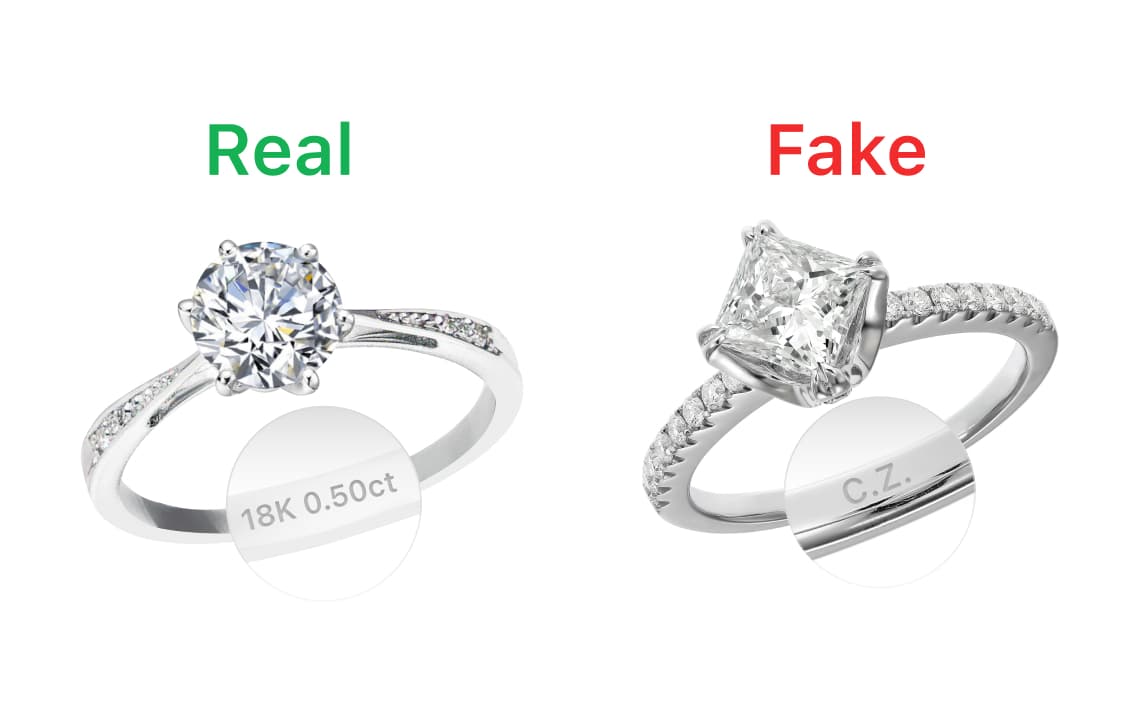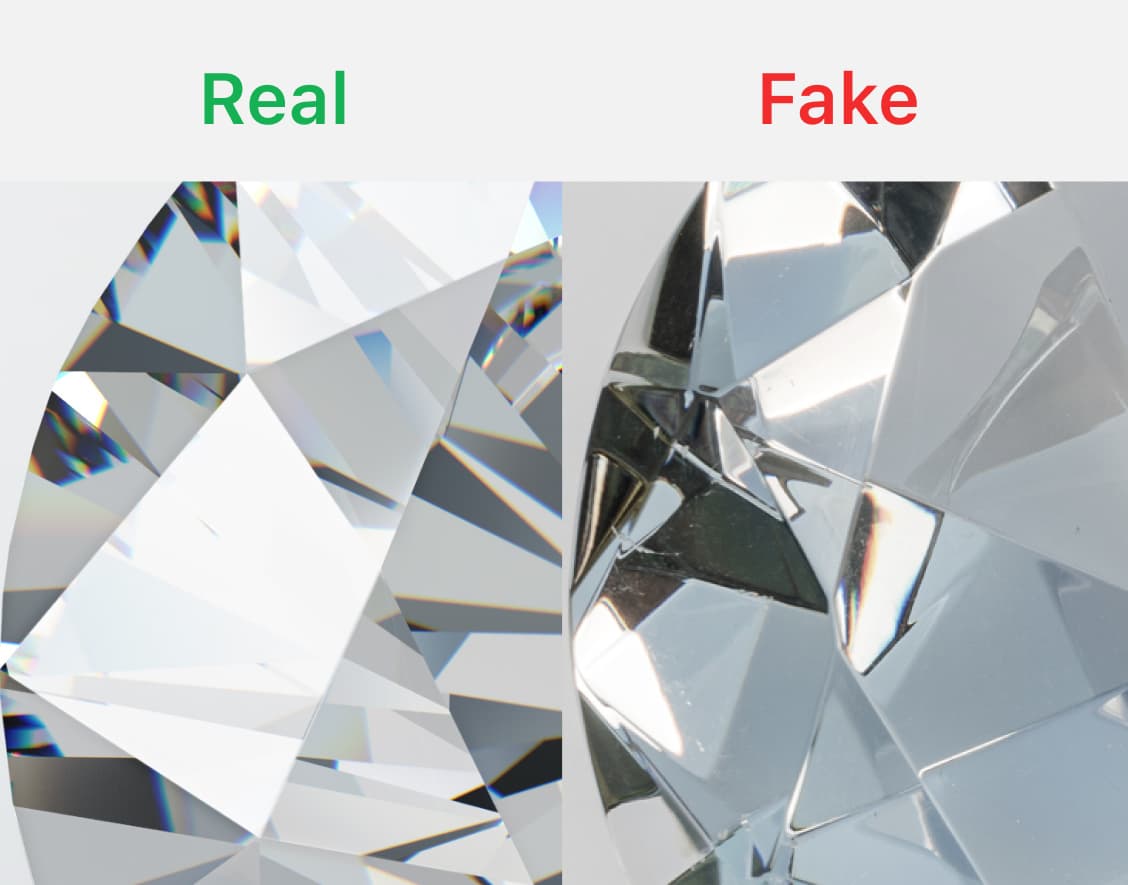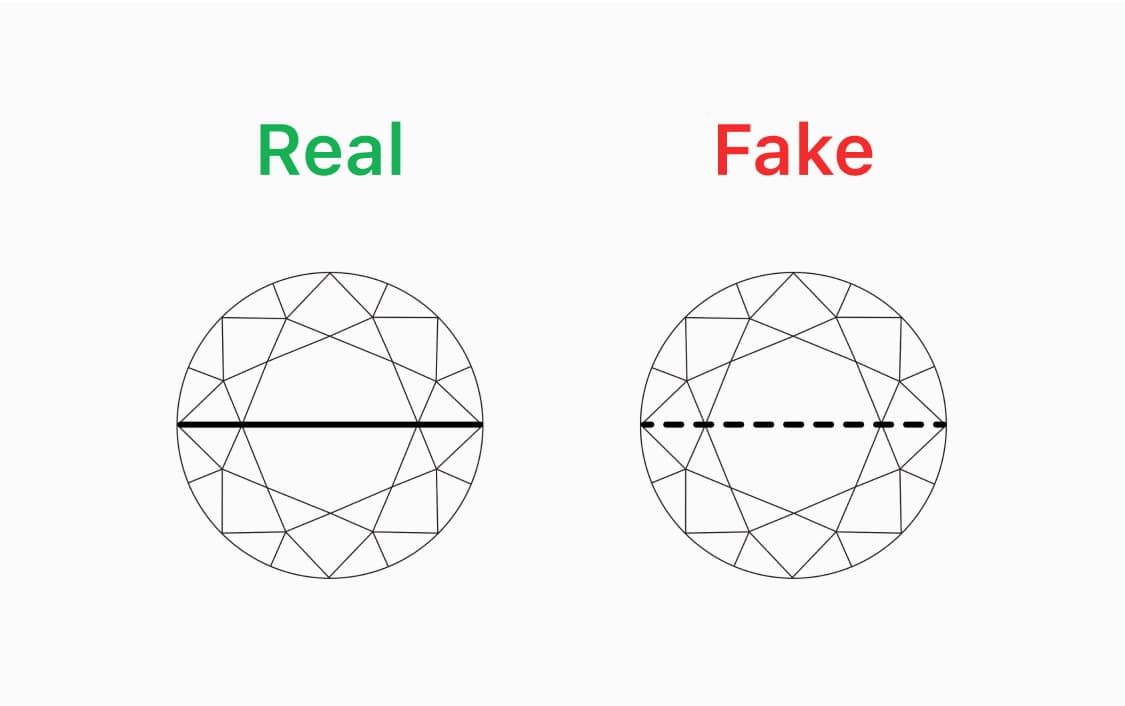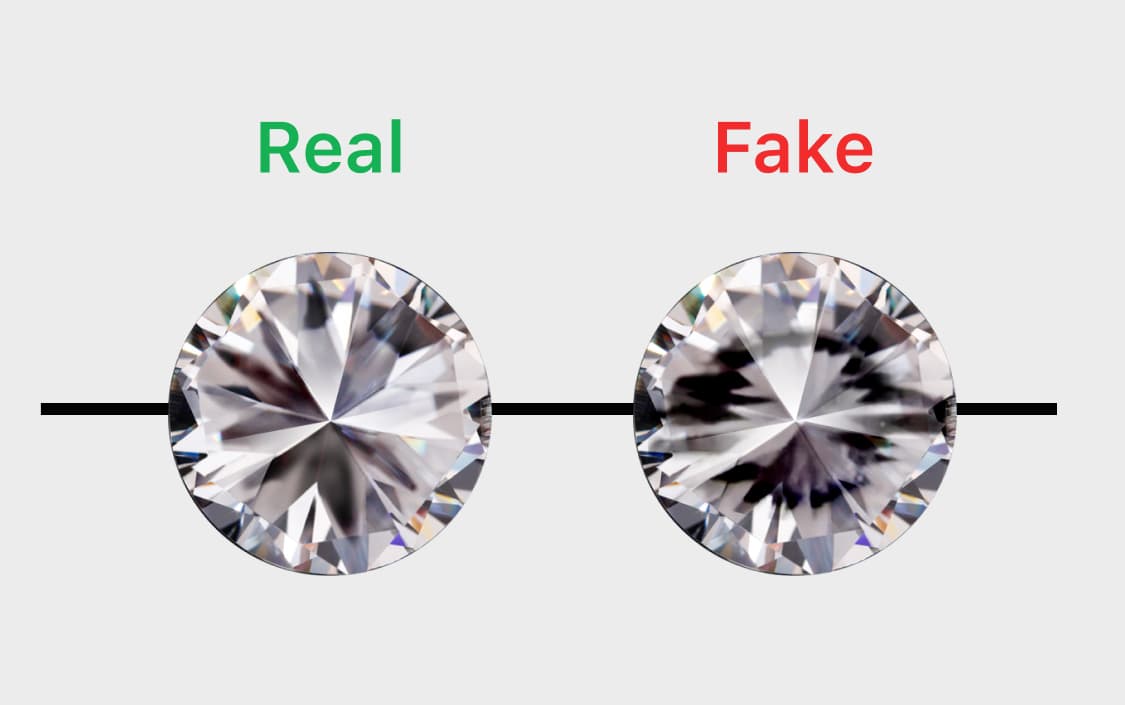It’s always nice to know if your stone is the real thing. You can always take the jewel to a professional. An industry expert can easily distinguish between real and fake stones, but usually local diamond expert are overpriced for identification.
By following a few steps, and investing in an inexpensive jeweler’s loupe, you can make your own preliminary determination as to whether the diamond is genuine before you start writing checks to jewelers.




